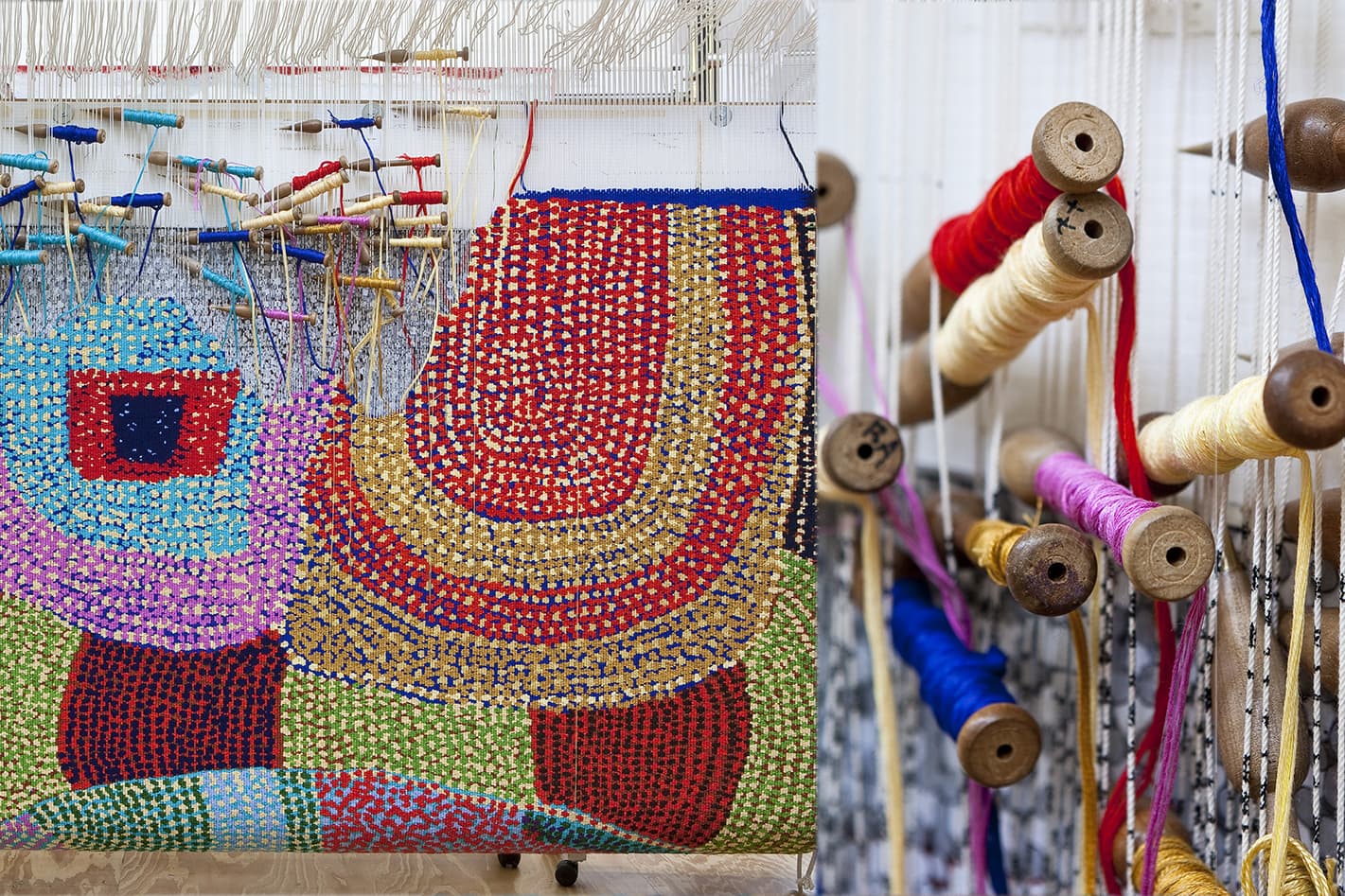



In 2010 the ATW collaborated with celebrated Indigenous artist Ruby Williamson to translate her painting Puli Murpu into tapestry. Williamson is of the Pitjantjatjara language group, born near Amata in the Anangu Pitjantjatjara Yankunyjatjara lands in South Australia.
Born in the 1940s, Williamson is a senior law woman of her country and her skills are based in fostering law and culture, storytelling, hunting, punu (wooden carving), dancing and painting.
The weavers have constructed the tapestry palette of bobbin mixes using solid, flat colour with mainly woollen yarn and small amounts of cotton in similar tones, to add lustre and to ‘lift’ the mix. As there is a lot of visual information in the design, the weavers felt this was a good way to capture the rhythms of the marks in the design, while keeping the colours clear and uncluttered.
The colours were carefully chosen to describe the foreground, middleground and background layers of the delicately painted dots and flat background colour. In the bottom left hand corner, for example, the two yellow tones, one pale and one strong, sit forward to the turquoise blue background. The coloured woven background areas shift the colour in response to the different foreground detail colours: the yellow makes the turquoise appear greenish; the purple allows the turquoise to appear to have more blue tones.
Through their interpretation of the design, the weavers have linked the woven dots, minimising the amount of hand sewing required. Generally when weaving, multiple colours of cotton thread are used to sew up slits that occur between shapes and colours, along the length of a warp thread. The weavers have had to balance the rhythm of the dots in the design with the constraints of the warp threads, keeping the rhythm of the forms and the relationships between the colours, background areas and dots of the original design.
In 1999, the senior women of Amaṯa, including Williamson, founded Minymaku Arts, now called Tjala Arts.